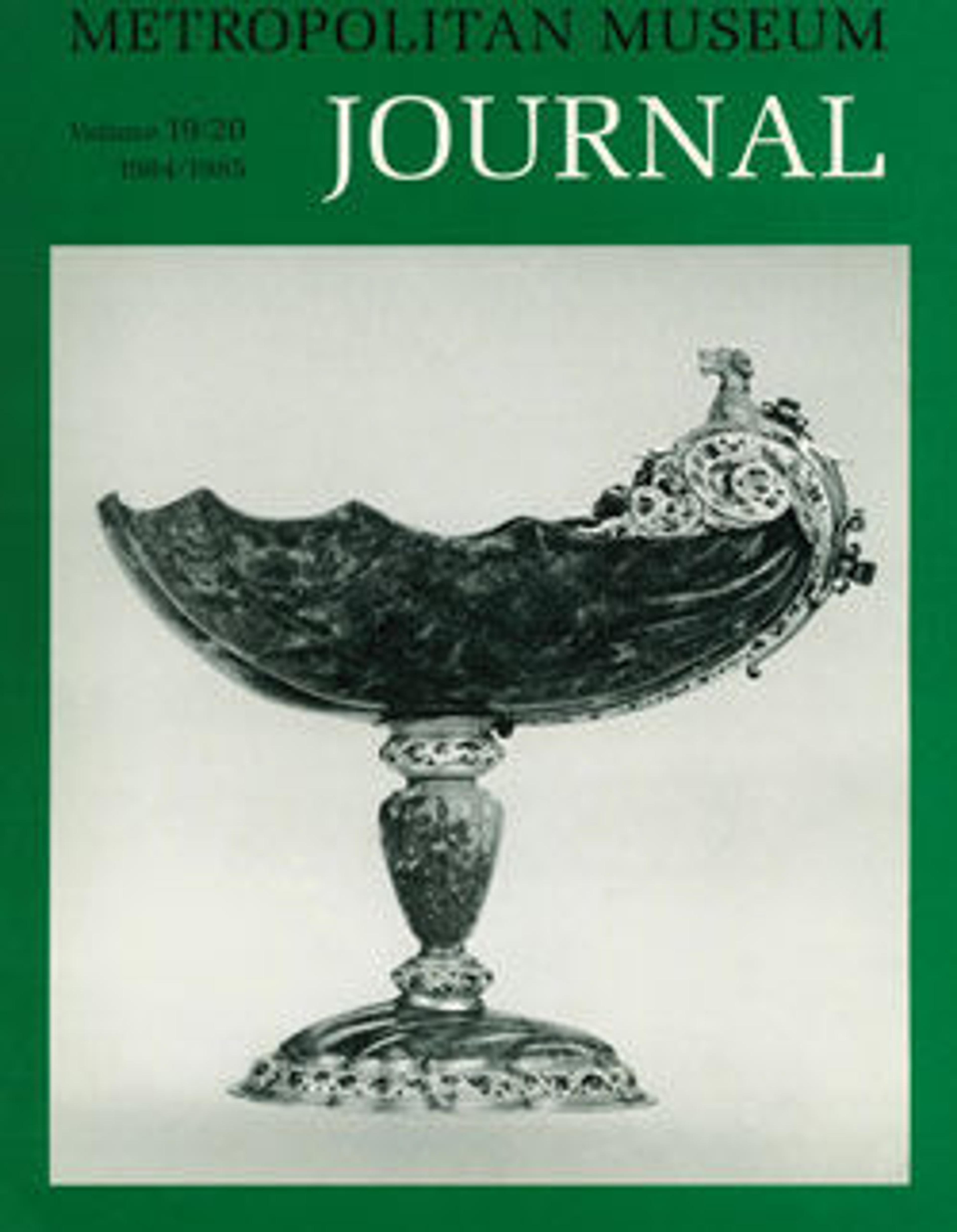Standing cup
Although believed to have been made in France, this standing cup was possibly inspired by drawings by the South German (Aachen) goldsmith Reinhold Vasters (1827–1909), who in turn had looked to the lapidary and goldsmiths' work of the sixteenth-century Mannerists. A mature style of the Renaissance, Mannerism reached its height in German and Dutch decorative arts and, like the other "antique" styles, was imitated in the nineteenth century. Mannerism frequently employed grotesque decoration and contorted, exaggerated forms that were readily adapted to metalwork. The cup of carved jasper is set with a fantastic and bejeweled dragon further enameled in gray, blue, green, red, blue, and white, and an enameled mermaid with gold hair issuing from the mouth of a dolphin. The cup is also ornamented with precious stones and enameled with garlands and scrolls. Exotic specimens, such as coconut shells and hardstones found in nature, were prized in the sixteenth and seventeenth centuries and inspired goldsmiths to create ornate gold mounts decorated with enamel and encrusted with jewels.
Artwork Details
- Title: Standing cup
- Designer: Probably after a design by Reinhold Vasters (German, Erkelenz 1827–1909 Aachen)
- Date: ca. 1870–90
- Culture: probably French
- Medium: Red jasper; gold, partly enameled and set with gems
- Dimensions: Overall: 10 1/4 × 10 3/8 × 4 1/4 in. (26 × 26.4 × 10.8 cm)
- Classification: Metalwork-Gold and Platinum
- Credit Line: Gift of J. Pierpont Morgan, 1917
- Object Number: 17.190.1703
- Curatorial Department: European Sculpture and Decorative Arts
More Artwork
Research Resources
The Met provides unparalleled resources for research and welcomes an international community of students and scholars. The Met's Open Access API is where creators and researchers can connect to the The Met collection. Open Access data and public domain images are available for unrestricted commercial and noncommercial use without permission or fee.
To request images under copyright and other restrictions, please use this Image Request form.
Feedback
We continue to research and examine historical and cultural context for objects in The Met collection. If you have comments or questions about this object record, please complete and submit this form. The Museum looks forward to receiving your comments.
